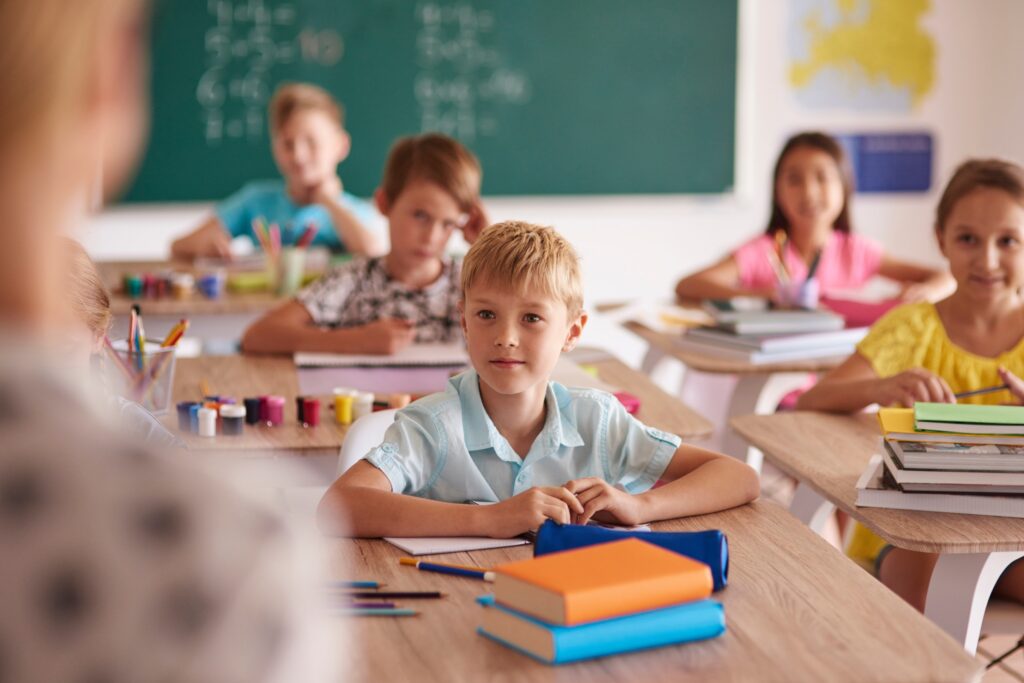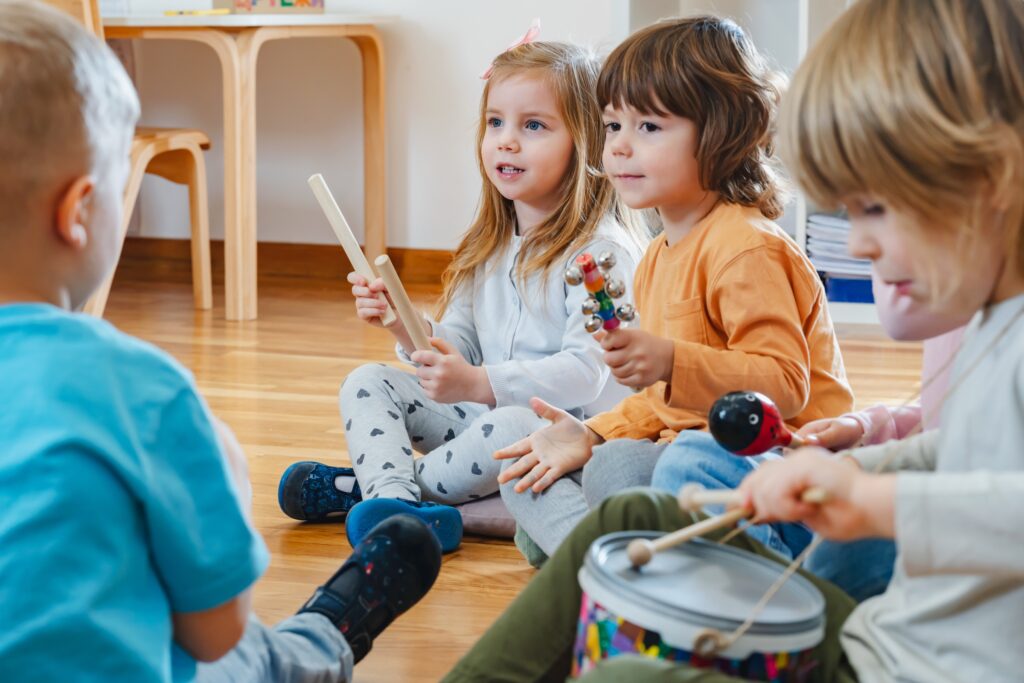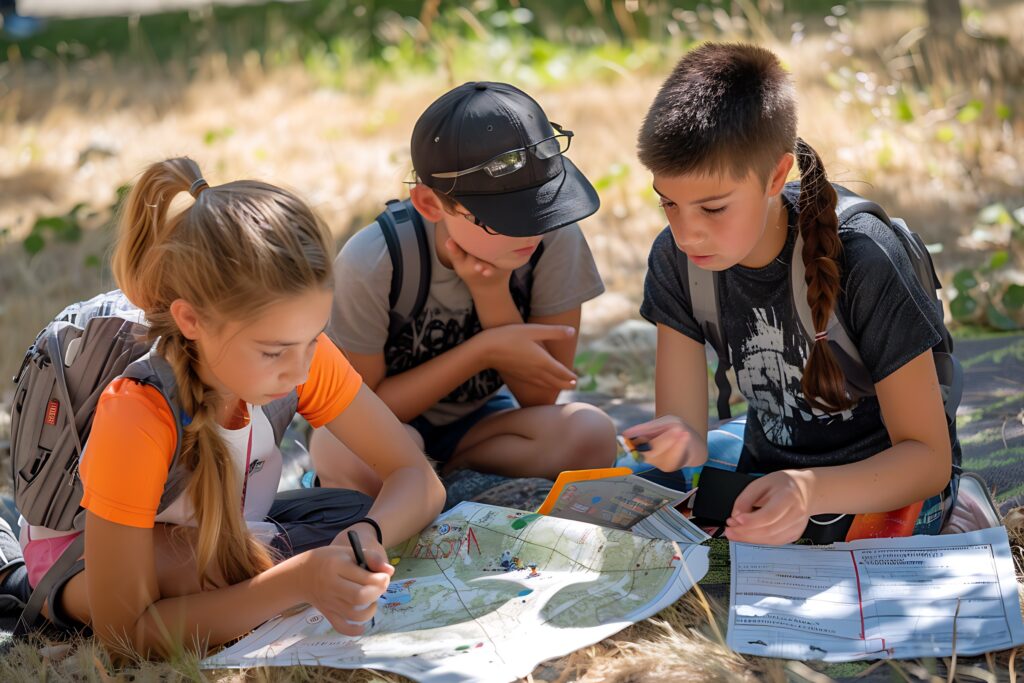What is Observation?

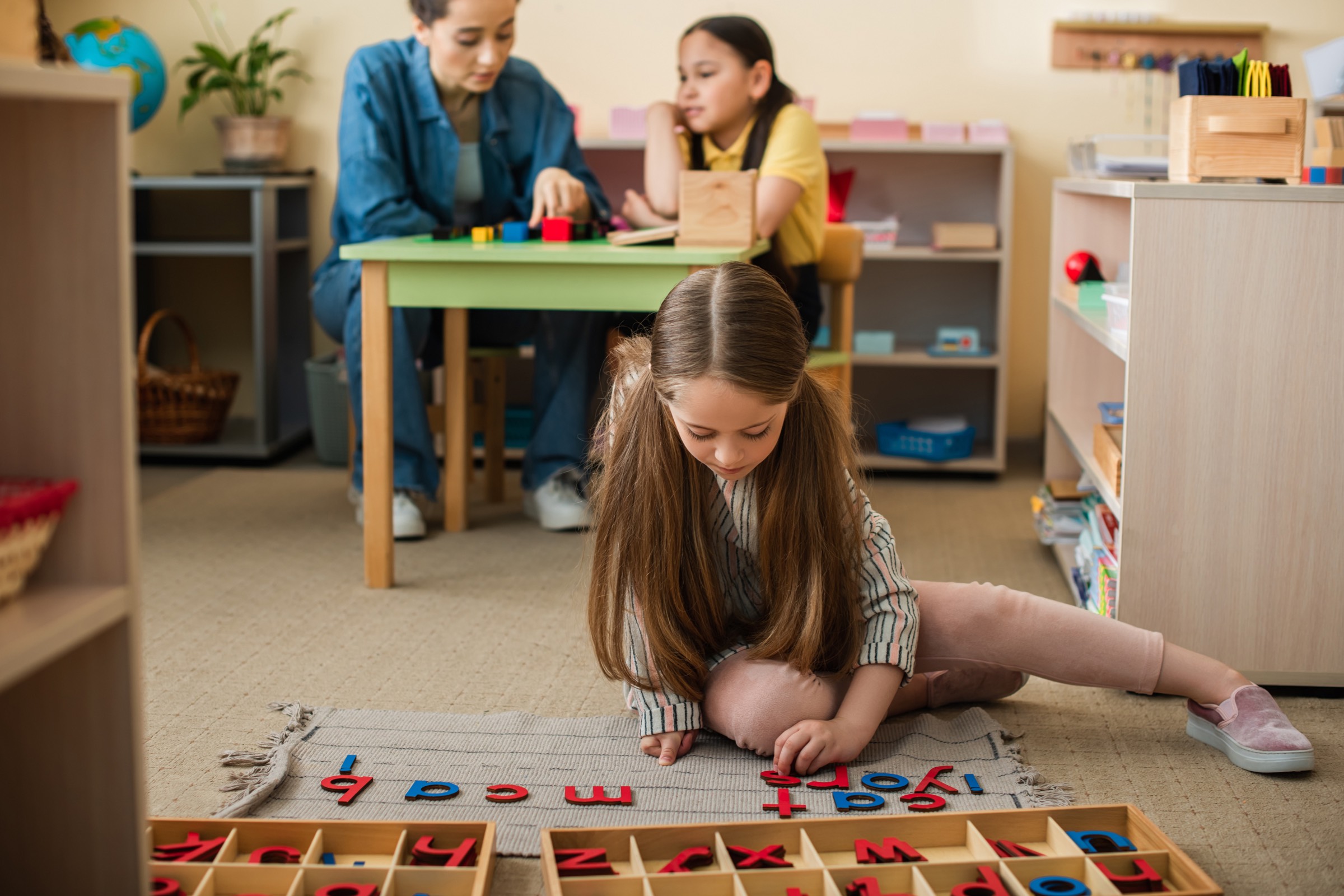
“What’s in a name? …A rose by any other name would smell as sweet”
Shakespeare.
We tied ourselves in knots when talking about recording the observations.
One person said, “I’m documenting the observation.”
Then the next person said, “What did you plan from it?”
The first person said, “What do you mean? That was the plan.”
And it went downhill from there.
After confusion over a lengthy time, we became aware that I was thinking of the child observation that commences a planning cycle, and the other person was thinking of observing an educational experience that was occurring or had been planned. The word ‘observation’ clearly has multiple applications.
Observation is a critical, central, and essential part of Early Childhood Education practice. It was observation of children that first led to a departure from the ‘desks in rows’ model when Montessori applied her scientific observation to a group of children aged between 2 ½ to 6yrs in her first Casa. She developed theories from what she observed, tested these theories with the children and the outcomes of the method became renown around the world as staggeringly different, and amazingly beneficial for the children.
Observation remains central to the Montessori method, and indeed the Early Childhood approach universally. But what does “observation” mean, and how do we implement it? A simple google search reveals a common understanding of the meaning of observation:
observation
/ɒbzəˈveɪʃ(ə)n/
noun
1. the action or process of closely observing or monitoring something or someone.
“she was brought into hospital for observation”
Additionally, however, there is a second meaning for observation:
2. a statement based on something one has seen, heard, or noticed.
“he made a telling observation about Hughie”
The planning cycle begins with ‘observation’.
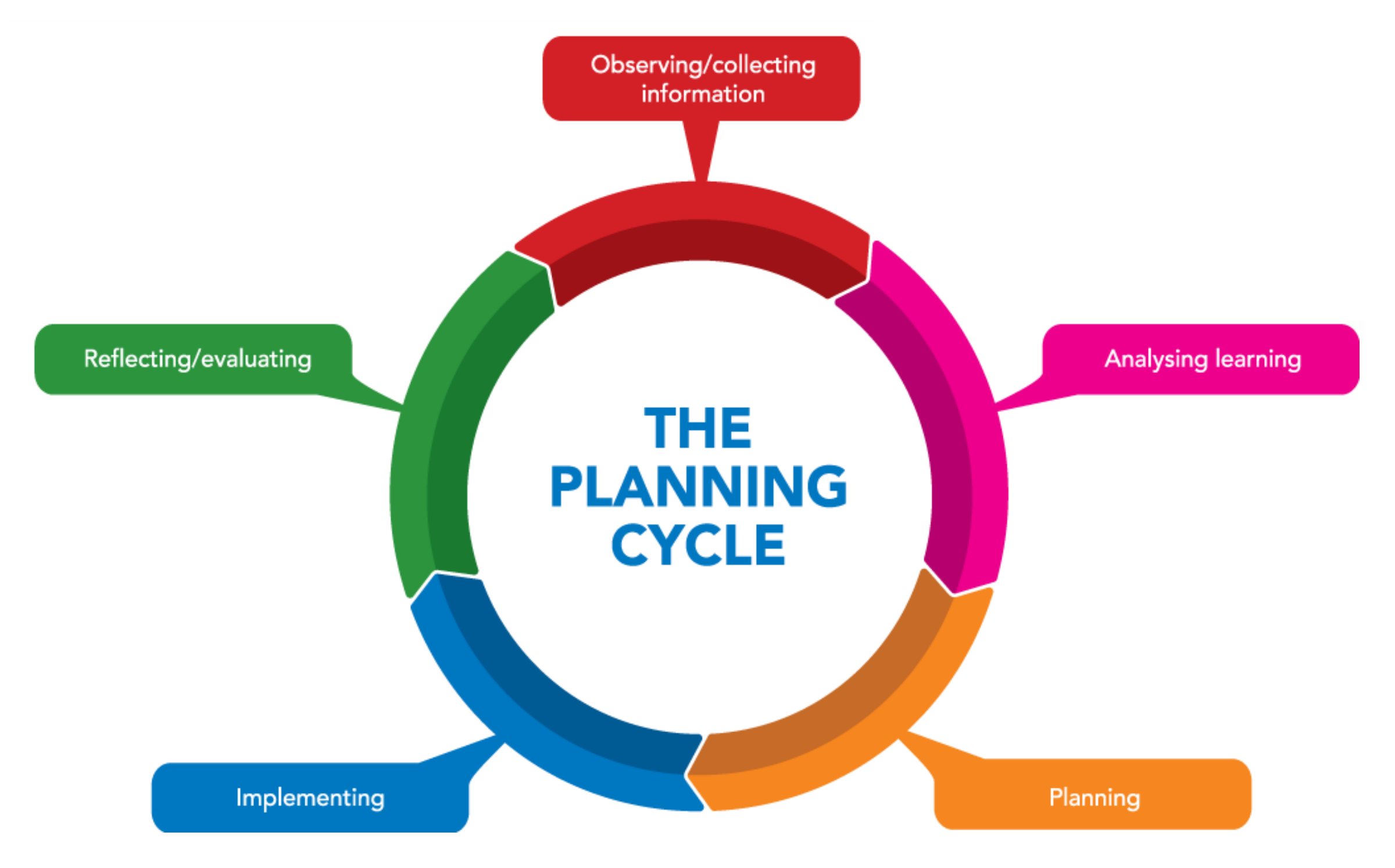
An educator observes a child and notes something of interest. They think about what they have observed (analysing), and then consider how to best provide for that child on the basis of what they have seen (planning). They then implement the plan whilst observing the child, and reflect on what occurred. This may lead to the cycle resuming as the reflection/evaluation may form the basis of further planning.
Therefore, observation forms the beginning of the cycle, then the educator analyses what they have seen and if we bear in mind that the second meaning of ‘observation’ is to make a statement about what you have seen or heard – or your interpretation of it, your interpretation statement is your ‘observation’ on the observation.
Then the planning occurs.
One the experience is implemented, the educator must observe the child’s engagement and then reflect and/or evaluate, and the remarks made could be called an ‘observation’. This may also form the observation for a new planning cycle. If we doctor the ACECQA diagram with the broadest meanings of the word ‘observation’ it may well look like this:
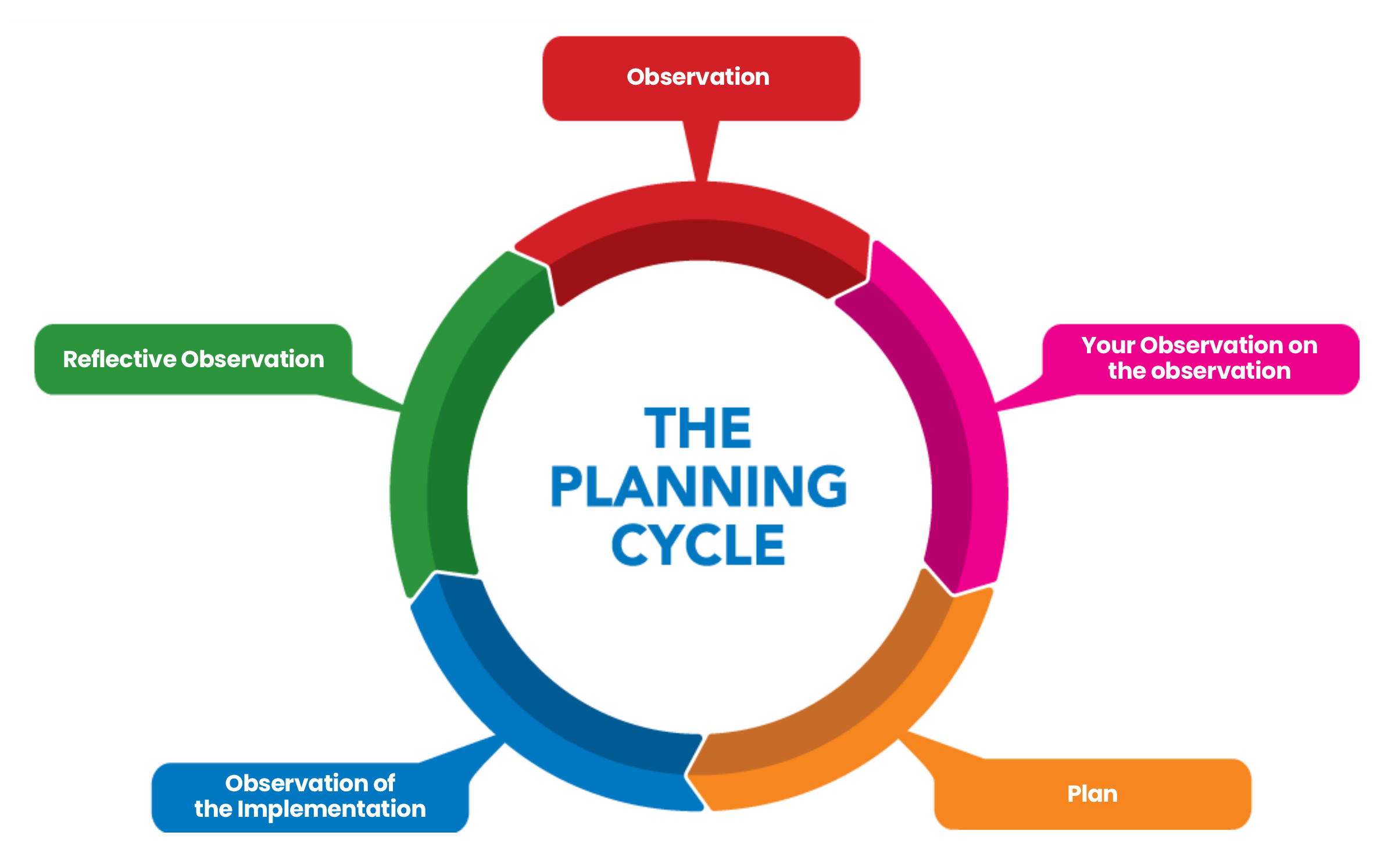
It is little wonder that there can be confusion about ‘what is an observation’!
Just to add another layer of confounding language, educators are also required to ‘supervise’ which is another form of observation. In a sense, the diagram above could be placed in a context of supervisory observation.
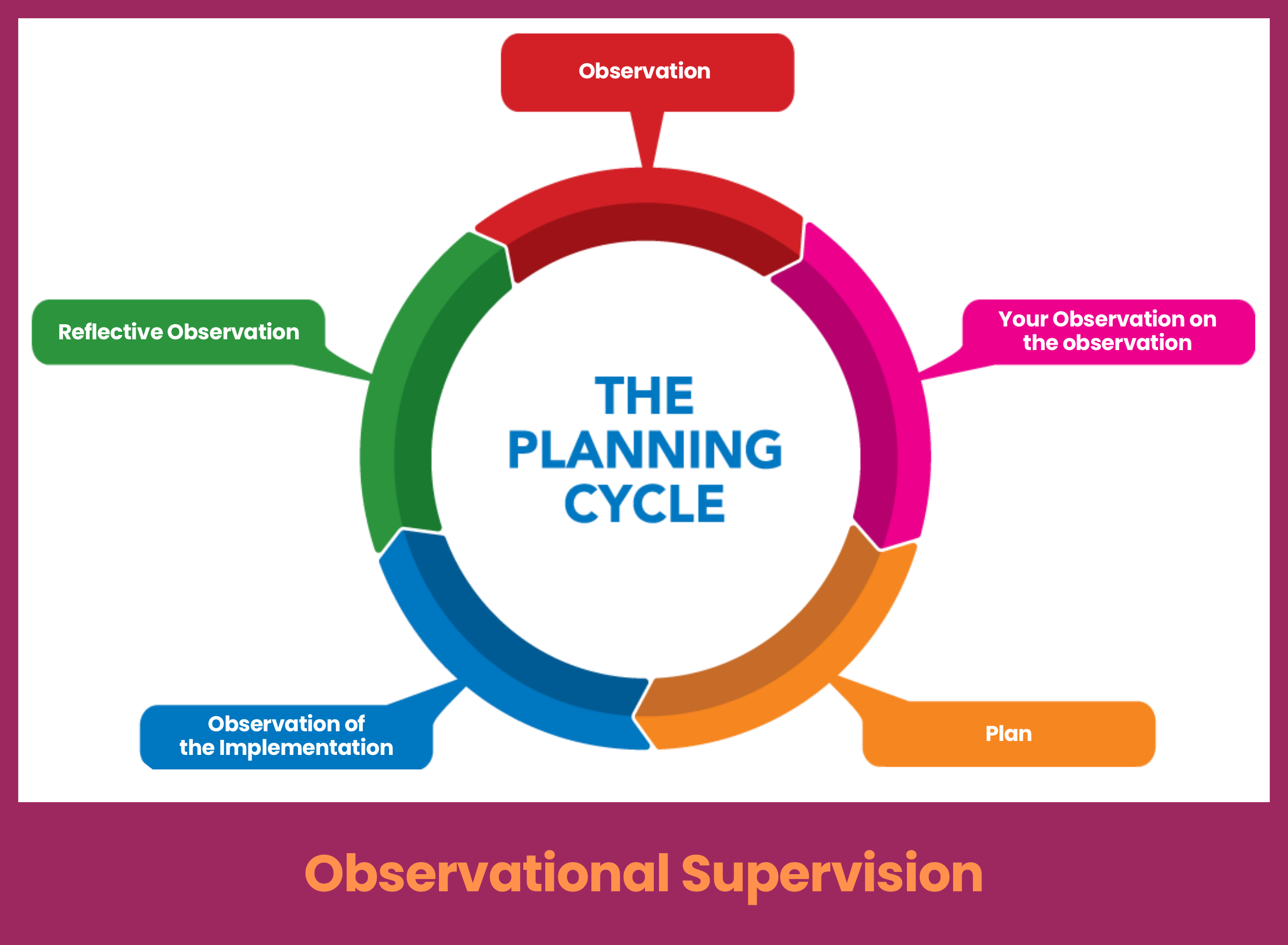
Your Child’s Day
In developing the language for the templates for YCD, we decided to avoid the word, “observation”. With the multiple applications possible, providing different language to improve clarity. Across the 3 main planning cycle templates we have chosen the language we feel best matches the process, without utilising the word ‘observation’.
PLE: Planned Learning Experience.
This template suits a situation where an educator is making a plan for something to occur in the future. This might suit situations such as a cooking or cultural activity, special resourcing for a child’s interest, or a behavioural intervention.
The PLE begins with an “Initiator”.
The initiator might be a child observation, it may also be a contribution from a parent or a current interest or focus that the class is investigating. There is a text box for the initiator to be outlined, as well as any analysis that the educator undertakes that guides the thinking for what is planned.
The next section is the “Activity”. This is where the planning takes place.
The Activity section includes several boxes for the:
- Title
- Resources (e.g. ingredients or resources)
- Purpose (what did your analysis indicate?)
- Method
- Aim – Direct – a specific goal
- Aim – Indirect – other possible outcomes that may occur
- Associated vocabulary (as we seek to support the child’s vocabulary extension)
“Implement”
The text box allows for the educator to write what occurred during the experience. Photos can also be added.
“Reflection/Evaluation”
The educator may write a reflection upon the experience for themselves, parents, or as an internal note. This may then provide the initiator for further planned activities. There is also the opportunity to follow up the experience with a further activity or Montessori experience.
RELE: Retrospective/Emergent Learning Experience
This template is designed for a learning experience that unfolds without prior planning. This might be a situation such as finding a lady beetle in the garden, to the spontaneous construction of a human body out of spare parts. The experience would generally be child-led and may lead to what many refer to as a ‘learning story’. In this situation there is no initiating observation and analysis, but rather a learning experience that evolves. To capture this event, the template begins with:
“Activity” as the educator documents with words/and or photos the story of the experience. The educator simply gives it a title, and may afterwards choose to add the outcomes (aims) that they notice, and vocabulary that was used.
“Implement”
The educator captures the experience through describing and/or taking photographs of the event, or the creations of the children.
“Reflection/Evaluation”
The educator reflects upon the experience for themselves, parents or as an internal note. This may then provide the initiator for further planned activities. There is also the opportunity to follow up the experience with a further activity or Montessori experience.
MAE: Montessori Activity Experience
This template suits the Montessori curriculum where all the apparatus and specified interactions are already established with readiness indicators (observations which indicate a child may be ready and interested in a particular apparatus), methods of presentations, identified goals and often sequence of learning. In YCD, the educator has the opportunity to place a ‘readiness indicator’ against an experience for a child in the class overview screen (Montessori Education Summary – MES) without needing to duplicate their documentation from the Montessori albums. For this reason, “Initiator” isn’t required. It is taken as having to have occurred through the Montessori Educator’s choice to introduce the activity with the child’s interest apparent. The readiness indicators can be added at the end of a prior experience, or independently as the educator observes in the classroom.
“Activity”
By selecting an activity name from the Montessori library, the educator is already provided with Direct and Indirect Aims as well as Associated Vocabulary by default. The Educator is able to edit these if they wish.
“Implement”
Again, by default, an account of a child’s typical experience is included, which the educator may adjust or enhance. Stock photos of the activity are also provided, and educators may remove, replace, or add to these with photos of the actual child.
“Reflection/Evaluation”
The educator reflects upon the experience for themselves, parents or as an internal note. This may then provide the initiator for further planned activities. There is also the opportunity to follow up the experience with a further activity or Montessori experience.
In order to assist in understanding the terms we have utilised to avoid confusion with the word, ‘observation’, the adjusted ACECQA planning cycle for YCD is as follows:
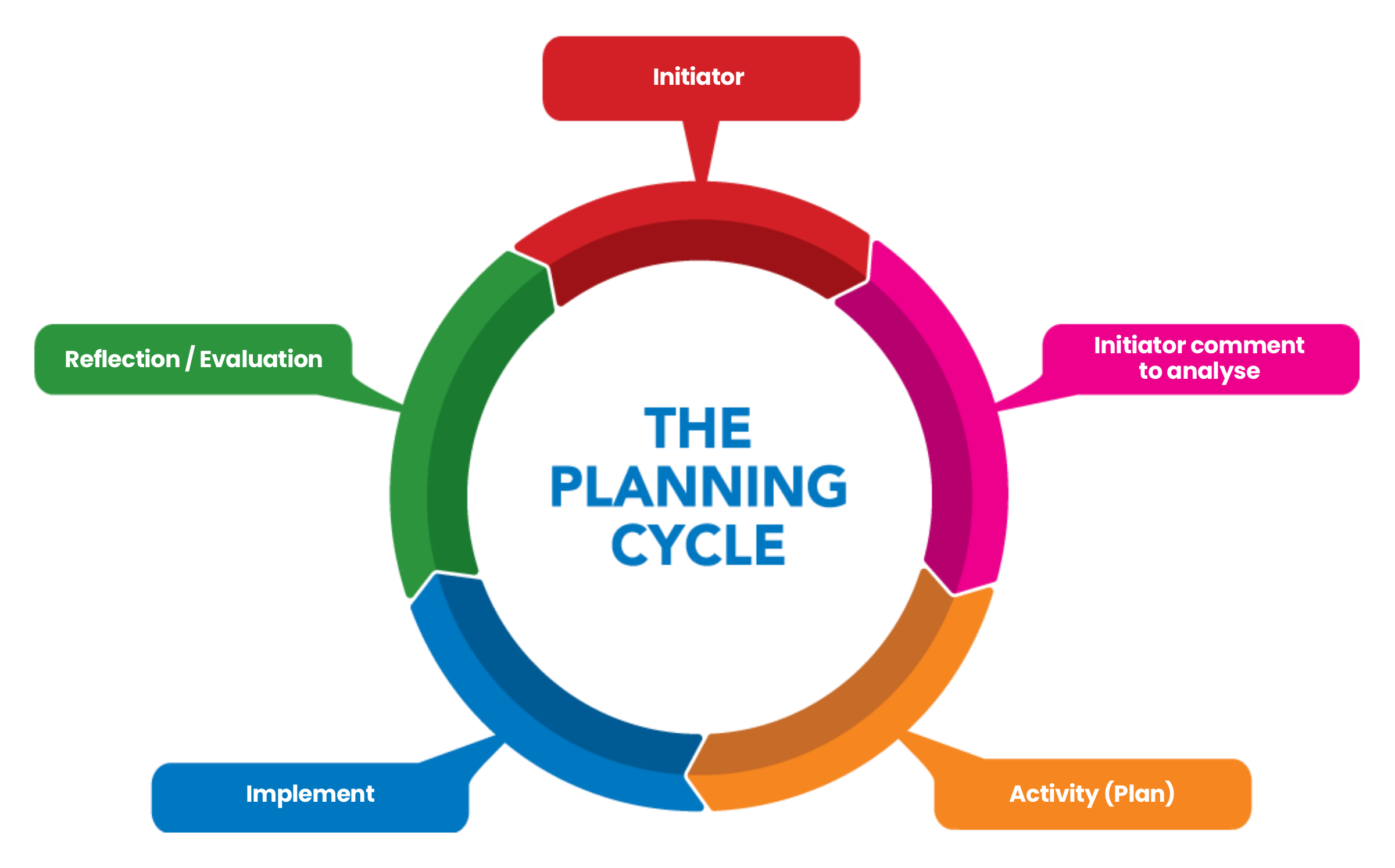
So, what is an observation?
It is both fundamentally everything, as well as specific processes within the planning cycle. Observation and Reflection underpin best practice in early childhood education, and it is our hope that the terms we have chosen for YCD support that best practice as well as clarity around the various aspects of planning and documenting the children’s experiences.
Helping children thrive is a shared journey. Spread the word and support fellow educators with insights and resources from Your Child’s Day.
Resources, advice, and uplifting stories for educators and families. No spam, ever.

